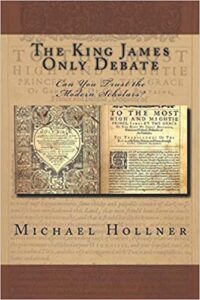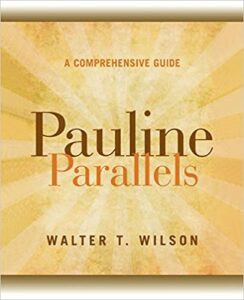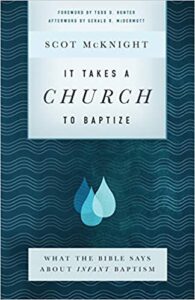 The new commentary on 1 Peter by Craig Keener, professor of Biblical Studies at Asbury Theological Seminary, and one of my favorite commentators and writers, was recently published by Baker Academic. At 656 pages, it is one of the most massive commentaries on 1 Peter that I have ever seen (and I have seen a lot of commentaries on 1 Peter). 1 Peter by John Elliott in the Anchor Bible series (2000) is 956 pages, but not as evangelical a work as Keener’s. The two-volume work on 1 Peter by John Brown (1807-1858) in the Geneva series is the largest. Keener is always worth consulting and reading, even if one does not accept all of his conclusions. This volume will certainly become the standard work on 1 Peter like Keener’s four-volume work on Acts has become.
The new commentary on 1 Peter by Craig Keener, professor of Biblical Studies at Asbury Theological Seminary, and one of my favorite commentators and writers, was recently published by Baker Academic. At 656 pages, it is one of the most massive commentaries on 1 Peter that I have ever seen (and I have seen a lot of commentaries on 1 Peter). 1 Peter by John Elliott in the Anchor Bible series (2000) is 956 pages, but not as evangelical a work as Keener’s. The two-volume work on 1 Peter by John Brown (1807-1858) in the Geneva series is the largest. Keener is always worth consulting and reading, even if one does not accept all of his conclusions. This volume will certainly become the standard work on 1 Peter like Keener’s four-volume work on Acts has become.
 (Read part 1, part 2, part 3, part 4, part 5). Part 6 will cover chapter 3, “Attacks on Doctrine.” This is one of only three chapters that has the same title as that listed in the table of contents. Like chapter 2, this chapters deals with omissions in modern versions. The difference here is that chapter 3 covers the major omissions that involve doctrine. Covered are Mark 16:9-20 (the resurrection and ascension), Acts 8:37 (salvation by faith alone), 1 John 5:7 (the Trinity), Colossians 1:14 (the blood of Christ), and 1 Timothy 3:16 (the deity of Christ). Hollner is certainly correct in bringing up the serious nature of these omissions. However, they are treated in his usual bombastic and error-ridden style.
(Read part 1, part 2, part 3, part 4, part 5). Part 6 will cover chapter 3, “Attacks on Doctrine.” This is one of only three chapters that has the same title as that listed in the table of contents. Like chapter 2, this chapters deals with omissions in modern versions. The difference here is that chapter 3 covers the major omissions that involve doctrine. Covered are Mark 16:9-20 (the resurrection and ascension), Acts 8:37 (salvation by faith alone), 1 John 5:7 (the Trinity), Colossians 1:14 (the blood of Christ), and 1 Timothy 3:16 (the deity of Christ). Hollner is certainly correct in bringing up the serious nature of these omissions. However, they are treated in his usual bombastic and error-ridden style.
The list of allusions to Mark 16:9-20 from ancient Christian writers (pgs. 89-90) is taken without attribution from the website of the Trinitarian Bible Society (TBS). The quote attributed to Burgon (p. 91) not only has words omitted, it is not even from Burgon. It is from F. H. A. Scrivener’s A Full Collation of the Codex Sinaiticus with the Received Text of the New Testament (p. xv). Hollner here repeats the error of the TBS, but at least the TBS gave a book title and page number, even if they were wrong. Hollner questions the antiquity of Codex Vaticanus and Codex Sinaiticus, but then says that Codex A and Codex C are “fifty years later” (p. 91). Although it is true of Sinaiticus that the leaf containing the end of Mark and the beginning of Luke is a cancel sheet, it has never been established that it was rewritten to exclude the ending of Mark (p. 92). Clearly, Hollner has never read Milne and Skeat’s Scribes and Correctors of the Codex Sinaiticus (British Museum, 1938). But perhaps Hollner can be forgiven for this statement, since he just copied it and many other sentences in this chapter from the TBS, again, without attribution. Hollner is quite the plagiarist.
On Acts 8:37, the fact that the verse “is found in the Greek texts of Stephanus 1550, Beza, and Elzevir” should not be included as “evidence in favor of including this verse” (p. 97). Hollner refers to the work of David Daniels on Sinaiticus, but never mentions the title, and adds an apostrophe to the end of Daniels last name (p. 100). The statement that Codex Vaticanus “is missing many complete books of the Bible” (p. 100) is misleading. The books are not missing because scribes thought they were spurious. They are simply missing. Hollner’s attempt at humor (p. 100) falls flat, like the book itself. It is incorrect that “many modern versions are even now fraudulently including the Apocryphal writings within their texts” (p. 100). No wonder Hollner never mentioned any. And he never explains how he knows that the King James translators only “reluctantly” included the Apocrypha (p. 101).
On 1 John 5:7, Hollner chastises Bruce Metzger for omitting mention of Codex 629 in his textual commentary (p. 105-106). True, it is not mentioned in his second edition (1994), but it is mentioned in the first edition (1971) and in his book The Text of the New Testament. Hollner actually gives the source of a quotation (p. 105), although he omits the author’s name (Roland Bainton) and botches the publisher’s name (Charles Scribner’s Sons, not “& Son”). But it turns out that the quotation from Erasmus is not a quotation at all, just Hollner’s rough approximation of what Erasmus said. His reference to Rummel (p. 110) contains no book title or page number. In the course of two sentences, Hollner refers to Stephanus as Robert Estienne, Stephanus, and Stephens, without an explanation as to the difference in names (p. 110). I seriously doubt that Hollner could “author a 1000-page book on I John 5:7 alone” (p. 111). Hollner’s reasoning is flawed when he states that there are only “13 Greek witnesses prior to the 10th Century that leave the verse out” (p. 113) but never tells his readers that there are none that contain it. There are not “hundreds of Church father witnesses” to 1 John 5:7 (p. 116). Hollner’s remarks on Erasmus and 1 John 5:7 should be corrected by the information I have in my forthcoming chapter 5 of The Text of the King James Bible. It would be nice if Hollner knew how to capitalize book titles (pgs. 117, 123). And speaking of titles, the “N.A.S.” (p. 119) should be the “NASB.” Hollner’s classification of seven languages to match Psalm 12:6-7 is artificial (p. 120). Charles Forster’s “A new plea for the three heavenly witnesses” (p. 123) is actually titled A New Plea for the Authenticity of the Text of the Three Heavenly Witnesses. Hollner’s quote from this work contains an addition that he mentions, but also one that he does not (p. 123). And regarding the quote, he misspells “Wordsworth” as “Wordsworts.”
There is not much to say about Hollner’s treatment of Colossians 1:14 and 1 Timothy 3:16. All his images of Greek manuscripts will mean nothing to the average reader, of which I hope there are few. In closing, I would like to say one more thing that applies to the whole chapter: I wish Hollner knew how to use a comma. Stay tuned for the seventh installment.
 If you come across a cheap copy of Pauline Parallels by Fred Francis and J. Paul Sampley (Fortress Press, first ed., 1975, second ed. 1984), don’t buy it. Because the authors didn’t believe that Paul actually wrote thirteen epistles, they presented just ten of Paul’s epistles with relevant passages from elsewhere in the Pauline corpus. A much better choice is Pauline Parallels: A Comprehensive Guide (Westminster John Knox Press, 2009), by Walter T. Wilson, who should not be confused with the Christian writer and medical doctor Walter L. Wilson (1881-1969). The newer and better work, which “builds on the success of Francis and Sampley’s fine work” (p. ix), covers all thirteen of Paul’s epistles. The text used is the NASB. Yes, it is not King James, but is a better than the RSV of the Francis Sampley editions.
If you come across a cheap copy of Pauline Parallels by Fred Francis and J. Paul Sampley (Fortress Press, first ed., 1975, second ed. 1984), don’t buy it. Because the authors didn’t believe that Paul actually wrote thirteen epistles, they presented just ten of Paul’s epistles with relevant passages from elsewhere in the Pauline corpus. A much better choice is Pauline Parallels: A Comprehensive Guide (Westminster John Knox Press, 2009), by Walter T. Wilson, who should not be confused with the Christian writer and medical doctor Walter L. Wilson (1881-1969). The newer and better work, which “builds on the success of Francis and Sampley’s fine work” (p. ix), covers all thirteen of Paul’s epistles. The text used is the NASB. Yes, it is not King James, but is a better than the RSV of the Francis Sampley editions.
 My review of Scot McKnight’s book It Takes a Church to Baptize: What the Bible Says about Infant Baptism (Brazos Press, 2018) was recently published in the Ancient Baptist Journal. The title of the book ought to be What the Bible Doesn’t Say about Infant Baptism. This is definitely McKnight’s worst book.
My review of Scot McKnight’s book It Takes a Church to Baptize: What the Bible Says about Infant Baptism (Brazos Press, 2018) was recently published in the Ancient Baptist Journal. The title of the book ought to be What the Bible Doesn’t Say about Infant Baptism. This is definitely McKnight’s worst book.
 (Read part 1, part 2, part 3, part 4). Part 5 will cover chapter 2, “The Deleted and Missing Words of God.” In the table of contents this is called “Missing Verses and Words.” Bible-believers have been pointing out the missing verses, clauses, phrases, and words from the New Testament of modern versions since the Revised Version came out in 1881. In my book King James, His Bible, and Its Translators (2nd ed.), in chapter 26, “The King James Version and Modern Versions,” there is an extensive list of the verses, clauses, phrases, and words omitted in the New Testament of modern versions. Hollner has nothing new to add here. And if he is going to discuss omissions in the Bible, then he should at least get the total number of words in the King James Bible correct. His figure of 783,820 words is not even close to the true number of 789,630 (p. 69).
(Read part 1, part 2, part 3, part 4). Part 5 will cover chapter 2, “The Deleted and Missing Words of God.” In the table of contents this is called “Missing Verses and Words.” Bible-believers have been pointing out the missing verses, clauses, phrases, and words from the New Testament of modern versions since the Revised Version came out in 1881. In my book King James, His Bible, and Its Translators (2nd ed.), in chapter 26, “The King James Version and Modern Versions,” there is an extensive list of the verses, clauses, phrases, and words omitted in the New Testament of modern versions. Hollner has nothing new to add here. And if he is going to discuss omissions in the Bible, then he should at least get the total number of words in the King James Bible correct. His figure of 783,820 words is not even close to the true number of 789,630 (p. 69).
I am glad to know that the author “will participate in exploring the Greek a few times in this book to let the audience know that we do have the necessary skills to be able to alert the Church” (p. 55). One would think, then, that Hollner would refer throughout to the latest edition (the 28th) of the Nestle-Aland Greek New Testament, published in 2012, instead of the 27th edition, published in 1993. It is not correct to say that “with every new Nestle’s Greek edition that comes out, changes are being made” (p. 70). The text in the 26th and 27th editions is the same.
Hollner has a very simplistic view of textual criticism: if a Greek word or phrase appears in the majority of manuscripts, then it is the correct word or phrase. He changes his tune, however, when he discusses 1 John 5:7 in chapter 3.
The picture of the author next to the picture of Dean Burgon under the heading of “The Bible Believers Team of Divine Inspiration and Holy Preservation” is laughable (p. 54). Not only would Dean Burgon never join the Dean Burgon Society, he would never make the statements about the King James Bible that Hollner does.
Mistakes abound. I note the following. The combination “very-best” (p. 52) is not a word, and neither is it necessary to add “very” to “best,” for if something is the best, then adding “very” to it adds nothing. Not sure why Hollner refers to the New King James Version as “so-called” (pgs. 66 & 76) since that is its actual name. But at least he gets the name right. It is incorrect to refer to the NASB as the NAS (pgs. 70 & 82). And to refer to “the N.I.V. and the N.A.S. versions” (p. 51) is incorrect, and not just because the periods are unnecessary (Hollner uses NIV on pgs. 68 & 70). He should have said “The NIV and the NASB” or “The New International and the New American Standard versions.” Similarly, he can’t decide whether to use “T.R.” (pgs. 63 & 72) or “TR” (pgs. 55 & 56). Like he does in the rest of the book, Hollner capitalizes words that do not need to be capitalized. But then he carelessly fails to capitalize the word “latin” (p. 65). It is worse than careless to omit spaces between words (pgs. 55 & 65). The percent symbol (pgs. 56, 57, & 84) should be spelled out. He refers to his first chapter, one of the few that actually has the same title as that listed in the table of contents, as “Advantage KJV” instead of “The King James Advantage” (p. 55). It is inexcusable to cite a source as “Ruckman; Riplinger” (p. 69) with no book titles or page numbers. Stay tuned for the sixth installment.